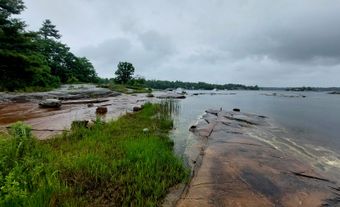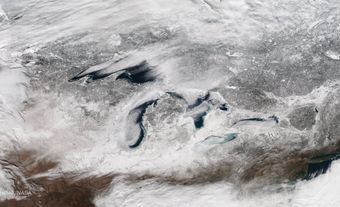The lake route was used by war parties of contesting native groups. Samuel de CHAMPLAIN discovered it (and named it for himself) in 1609 while accompanying a Montagnais war party against the Iroquois. The Abenakis called the lake Pitawbagok, which means "middle lake" or "double lake." Little settlement took place in the area in the time of New France, but French FORTIFICATIONS were established at Fort St-Frédéric (later Crown Point) in 1725-26 and Fort Carillon (later Fort Ticonderoga) in 1755. The British suffered some 2000 casualties in an ill-conceived assault on Carillon (1758), but Louis-Joseph de MONTCALM evacuated the forts and the British pressed northward into Canada (seeSEVEN YEARS' WAR). The same invasion route was followed by the Americans during the AMERICAN REVOLUTION and in a British counterattack southward. During the WAR OF 1812 a British strike against the US was thwarted when the British fleet was destroyed at PLATTSBURG, NY.
In more peaceful times, the lake was used as a transportation route. When frozen it made for fast travel by sleigh in winter. Steamboats were plying the lake by 1810. Canada's first railway, the CHAMPLAIN AND ST LAWRENCE RAILROAD, was built to connect Montréal with the lake (1836), which in turn was linked to the Hudson River, providing a connection to New York. Today the lake is popular for fishing and boating.

 Share on Facebook
Share on Facebook Share on X
Share on X Share by Email
Share by Email Share on Google Classroom
Share on Google Classroom


